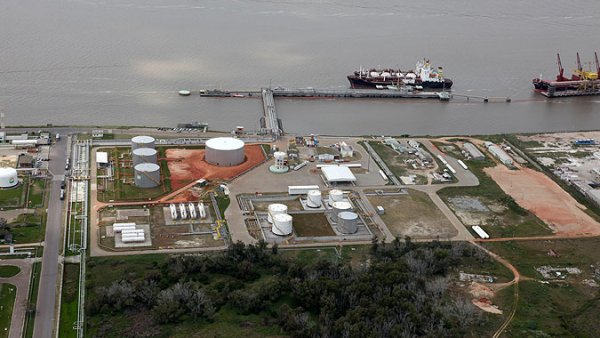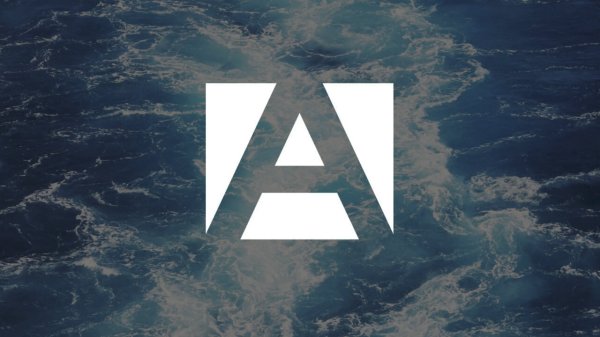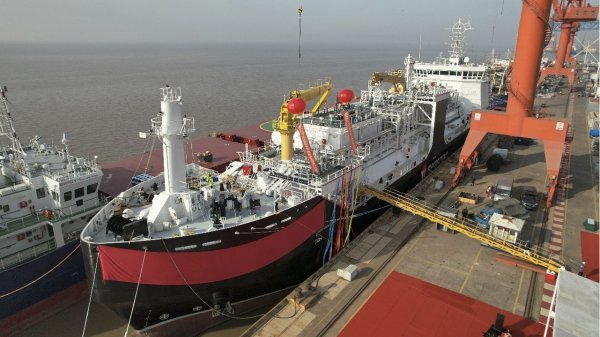LA and Long Beach propose 'bold strategies' to slash emissions
CAAP 2017 Discussion Document prioritizes reducing GHG emissions to 80% below 1990 levels by 2050.
The ports of Los Angeles and Long Beach have proposed what they describe as 'bold strategies' to expand programmes that reduce ship emissions in the next version of the San Pedro Bay Ports Clean Air Action Plan (CAAP).
Ports officials met on Thursday 17th November to mark the 10th anniversary of the initiative and unveil the CAAP 2017 Discussion Document, which outlines new concepts under consideration for the third iteration of the CAAP.
"The working document contains the boldest measures yet for moving the San Pedro Bay ports toward their ultimate goal of eliminating all harmful air pollution from port-related sources," the two Californian ports said in a statement.
The Discussion Document prioritizes reducing greenhouse gas (GHG) emissions from port-related sources to 80 percent below 1990 levels by 2050. The target aligns with California's clean air goals and objectives in the state's new Sustainable Freight Action Plan, as well as efforts by the cities of Los Angeles and Long Beach to shrink GHG emissions ahead of state targets.
The joint meeting kicked off a three-month public review and comment period that runs until 17 February 2017. The ports plan to incorporate public comments received and present the 2017 CAAP Update for final consideration by their governing boards in the spring of 2017 at another joint harbor commission meeting.
Developed with input from industry, government, community and environmental stakeholders, the Discussion Document recommends a new suite of incentives and regulatory approaches to achieve CAAP goals. They include the following proposals related to marine fuels:
- Update the Vessel Speed Reduction Program, expand the use of state-approved alternative technologies to reduce at-berth emissions, incentivize clean technology upgrades on ships, and encourage carriers to deploy their cleanest vessels to the San Pedro Bay ports.
- Accelerate deployment of cleaner harbour craft engines.
- Develop infrastructure plans to support terminal equipment electrification, alternative fuels and other energy resource goals.
- Continue to develop and implement viable energy conservation, resiliency and management strategies under the Port of Los Angeles Energy Action Management Plan and the Port of Long Beach Energy Initiative.
CAAP 2017 is designed to improve upon the initial plan adopted in 2006 and updated in 2010 to reduce emissions from all port-related sources, including ships and harbour craft.
One strategy is the Technology Advancement Program (TAP), created to accelerate the development and demonstration of cutting-edge emission reduction technology. To date, the ports have invested $15 million in 35 TAP projects, including the emission capture systems for ships at berth.
"The Ports of Los Angeles and Long Beach are driving forces of our region's economy - they should also be models for how we move toward a more sustainable future by balancing growth and environmental stewardship," said Los Angeles Mayor Eric Garcetti. "The draft Clean Air Action Plan is an important step in our work to reduce air pollution in our communities, and take action on climate change. I look forward to working with Mayor Garcia to build on this progress and continue strengthening this plan in the coming months."
"These updates will move the region closer to a zero emissions future," said Long Beach Mayor Robert Garcia.
Under the CAAP, the ports of Los Angeles and Long Beach say they have reduced diesel particulate matter (DPM) by up to 85 percent, cut NOx in half, eliminated 97 percent of SOx, and lowered GHG by an average of 12 percent, all while container volume has increased by 7 percent. The ports also claim that they continue to exceed their 2023 targets for reducing DPM and SOx (77 percent and 93 percent respectively) and are closing in on their 2023 target of reducing NOx emissions 59 percent.
At Thursday's meeting, port leaders welcomed all members of the port community to weigh in on the Discussion Document.
"We're looking forward to public input to make this the best update possible," said Lori Ann Guzman, president of the Long Beach Board of Harbor Commissioners.
Image: Gerald Desmond Bridge in Long Beach.
Ports officials met on Thursday 17th November to mark the 10th anniversary of the initiative and unveil the CAAP 2017 Discussion Document, which outlines new concepts under consideration for the third iteration of the CAAP.
"The working document contains the boldest measures yet for moving the San Pedro Bay ports toward their ultimate goal of eliminating all harmful air pollution from port-related sources," the two Californian ports said in a statement.
The Discussion Document prioritizes reducing greenhouse gas (GHG) emissions from port-related sources to 80 percent below 1990 levels by 2050. The target aligns with California's clean air goals and objectives in the state's new Sustainable Freight Action Plan, as well as efforts by the cities of Los Angeles and Long Beach to shrink GHG emissions ahead of state targets.
The joint meeting kicked off a three-month public review and comment period that runs until 17 February 2017. The ports plan to incorporate public comments received and present the 2017 CAAP Update for final consideration by their governing boards in the spring of 2017 at another joint harbor commission meeting.
Developed with input from industry, government, community and environmental stakeholders, the Discussion Document recommends a new suite of incentives and regulatory approaches to achieve CAAP goals. They include the following proposals related to marine fuels:
- Update the Vessel Speed Reduction Program, expand the use of state-approved alternative technologies to reduce at-berth emissions, incentivize clean technology upgrades on ships, and encourage carriers to deploy their cleanest vessels to the San Pedro Bay ports.
- Accelerate deployment of cleaner harbour craft engines.
- Develop infrastructure plans to support terminal equipment electrification, alternative fuels and other energy resource goals.
- Continue to develop and implement viable energy conservation, resiliency and management strategies under the Port of Los Angeles Energy Action Management Plan and the Port of Long Beach Energy Initiative.
CAAP 2017 is designed to improve upon the initial plan adopted in 2006 and updated in 2010 to reduce emissions from all port-related sources, including ships and harbour craft.
One strategy is the Technology Advancement Program (TAP), created to accelerate the development and demonstration of cutting-edge emission reduction technology. To date, the ports have invested $15 million in 35 TAP projects, including the emission capture systems for ships at berth.
"The Ports of Los Angeles and Long Beach are driving forces of our region's economy - they should also be models for how we move toward a more sustainable future by balancing growth and environmental stewardship," said Los Angeles Mayor Eric Garcetti. "The draft Clean Air Action Plan is an important step in our work to reduce air pollution in our communities, and take action on climate change. I look forward to working with Mayor Garcia to build on this progress and continue strengthening this plan in the coming months."
"These updates will move the region closer to a zero emissions future," said Long Beach Mayor Robert Garcia.
Under the CAAP, the ports of Los Angeles and Long Beach say they have reduced diesel particulate matter (DPM) by up to 85 percent, cut NOx in half, eliminated 97 percent of SOx, and lowered GHG by an average of 12 percent, all while container volume has increased by 7 percent. The ports also claim that they continue to exceed their 2023 targets for reducing DPM and SOx (77 percent and 93 percent respectively) and are closing in on their 2023 target of reducing NOx emissions 59 percent.
At Thursday's meeting, port leaders welcomed all members of the port community to weigh in on the Discussion Document.
"We're looking forward to public input to make this the best update possible," said Lori Ann Guzman, president of the Long Beach Board of Harbor Commissioners.
Image: Gerald Desmond Bridge in Long Beach.

|
IMO approves pricing mechanism based on GHG intensity thresholds
Charges to be levied on ships that do not meet yearly GHG fuel intensity reduction targets. |
|
|
|
||

|
VARO Energy expands renewable portfolio with Preem acquisition
All-cash transaction expected to complete in the latter half of 2025. |
|
|
|
||

|
NYK trials biofuel in milestone coal carrier test
Vessel is used to test biofuel for domestic utility company. |
|
|
|
||

|
H-Line Shipping orders LNG bunkering vessel
Vessel with 18,000-cbm capacity to run on both LNG and MDO. |
|
|
|
||

|
How to engineer and manage green shipping fuels | Stanley George, VPS
Effective management strategies and insights for evolving fuel use. |
|
|
|
||

|
Swedish government bans scrubber wastewater discharges
Discharges from open-loop scrubbers to be prohibited in Swedish waters from July 2025. |
|
|
|
||

|
MAN Energy Solutions achieves 100% load milestone for ammonia engine
Latest tests validate fuel injection system throughout the entire load curve. |
|
|
|
||

|
Petrobras secures ISCC EU RED certification for B24 biofuel blend at Rio Grande
Blend consisting of 24% FAME is said to have been rigorously tested to meet international standards. |
|
|
|
||

|
Stolt-Nielsen to fully control Avenir LNG with acquisition
Share purchase agreement to buy all shares from Golar LNG and Aequitas. |
|
|
|
||

|
Bureau Veritas supports launch of CIMC SOE's LNG bunkering vessel
Handover of Seaspan Energy's cutting-edge 7,600-cbm vessel completed. |
|
|
|
||
Related Links
- · Los Angeles holds the line on emissions targets [Insights]
- · Port of Long Beach cuts diesel emissions by 85% since 2005 [Insights]
- · Californian ports to update Clean Air Action Plan [Insights]
- · California At-Berth Regulation advisory becomes effective in January 2017 [Insights]
- · Long Beach 'the greenest port in the world' [Insights]
- · United States [Directory]
- · Long Beach [Directory]
- · Los Angeles [Directory]

